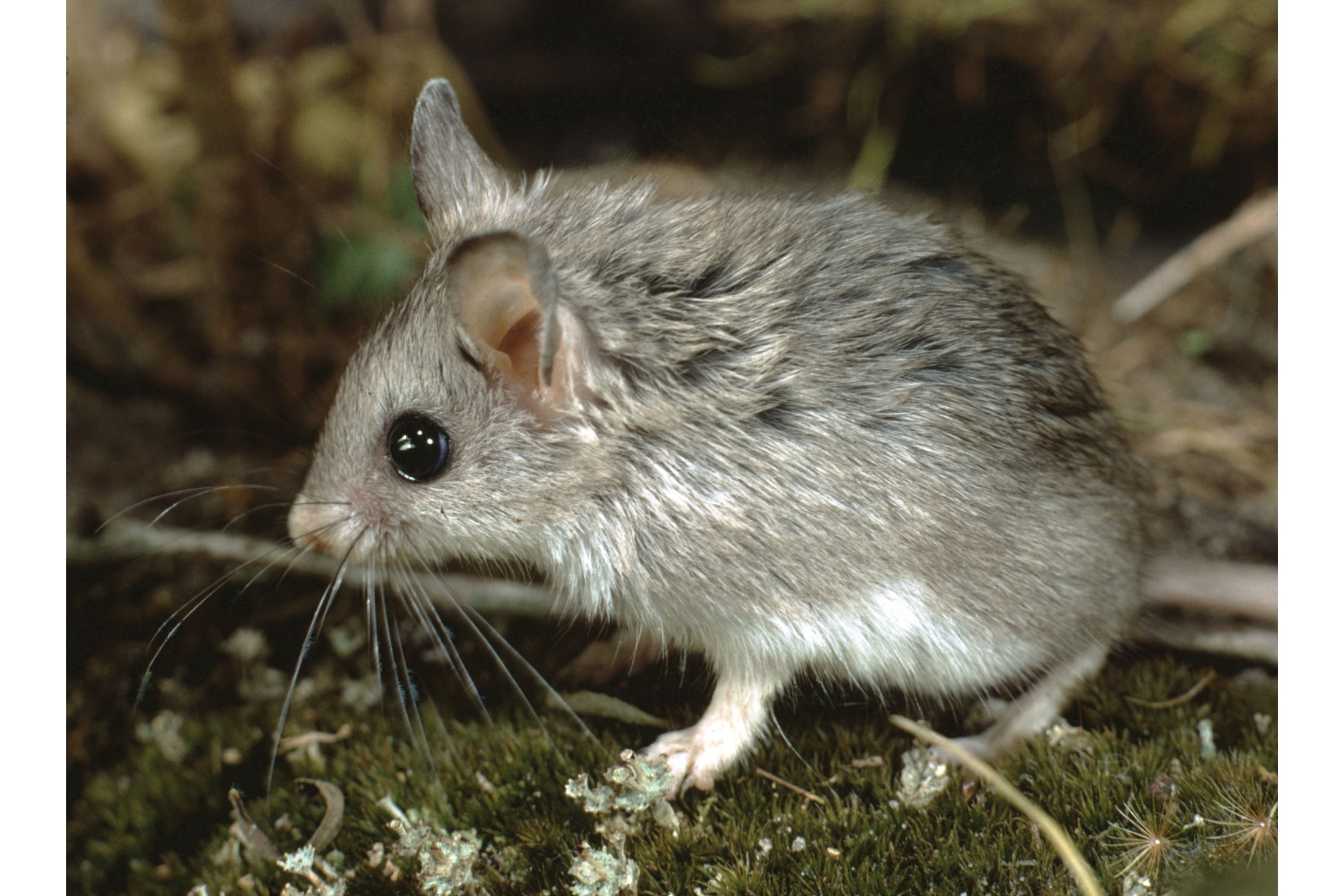Southern grasshopper mouse
(Onychomys torridus)

Description
The southern grasshopper mouse or scorpion mouse (Onychomys torridus) is a species of predatory rodent in the family Cricetidae, native to Mexico and the states of Arizona, California, Nevada, New Mexico, and Utah in the United States. Notable for its resistance to venom, it routinely preys on the highly venomous Arizona bark scorpion. The southern grasshopper mouse is a robust, small, nocturnal species that typically forms monogamous pairs. They have a short tail, growing to a total length of 120 to 163 mm (4.7 to 6.4 in). The head, back and sides are pinkish- or grayish-brown while the underparts are white, the two colors being distinctly separated. The tail is club-shaped, short and broad, the anterior part being the same color as the body and the tip being white. The southern grasshopper mouse feeds almost entirely on arthropods, such as beetles, grasshoppers and scorpions. In addition to arthropods, it is known to prey upon the little pocket mouse (Perognathus longimembris) and the western harvest mouse (Reithrodontomys megalotis). In the arid regions inhabited by the southern grasshopper mouse, the Arizona bark scorpion is plentiful and avoided by most predators because of the very painful sting it can inflict. The grasshopper mouse can feed on this scorpion with impunity even when the scorpion stings it repeatedly in the face. Researchers have found that a neural mechanism is involved that blocks the sending of pain messages to the brain. This mouse can normally feel pain from other sources, but can be temporarily insensitive to these stimuli after a dose of venom from a bark scorpion. This pain modulation is activated soon after the scorpion sting; the mouse does briefly feel pain from the sting, but the scorpion venom binds to the transmembrane channel otNav1.8. Specifically, the venom binds to a glutamic acid residue located within the channel protein, thus preventing neuron action potentials from firing and acting as a type of temporary anesthetic and pain reliever for the mouse. When this glutamic acid was replaced with hydrophilic glutamine residue, the venom did not bind with the protein, and the pain modulation ability was lost. Females are able to produce several litters in a year, but their reproductive life does not usually last into their second year. The average litter size is 2.6 (range 1 to 5), produced after an average gestation period of 29 days. The young are born naked, with pink translucent skin.
Taxonomic tree:







